Main menu
Common skin conditions

NEWS
Join DermNet PRO
Read more
Quick links
Subcorneal pustular dermatosis — extra information
Subcorneal pustular dermatosis
Author: Dr Sarah Hill, Dermatology Registrar, Waikato Hospital, Hamilton, New Zealand, 2006.
Subcorneal pustular dermatosis is also known as Sneddon-Wilkinson disease. It is a rare condition, characterised by pustules that appear in crops over months or years.
In some cases, subcorneal pustular dermatosis may be later diagnosed as generalised pustular psoriasis; generalised pustular psorasisis tends to be a more serious condition.
What does it look like?
Subcorneal pustular dermatosis is characterised by numerous soft pustules at the skin surface. They usually appear on the trunk, particularly in the skin folds such as the armpits and groin. They may appear on otherwise normal skin, but there are often within a red patch. The pustules resolve over a few days and are replaced by fine scale before there is another relapse and new pustules form again. The lesions are sometimes itchy, but generally the patient is otherwise well. It may flare-up for a few weeks and then clear up for months or years before reappearing. The process may be repeated over many years.
Subcorneal pustular dermatosis affects women more often than men and generally occurs in people over the age of forty.
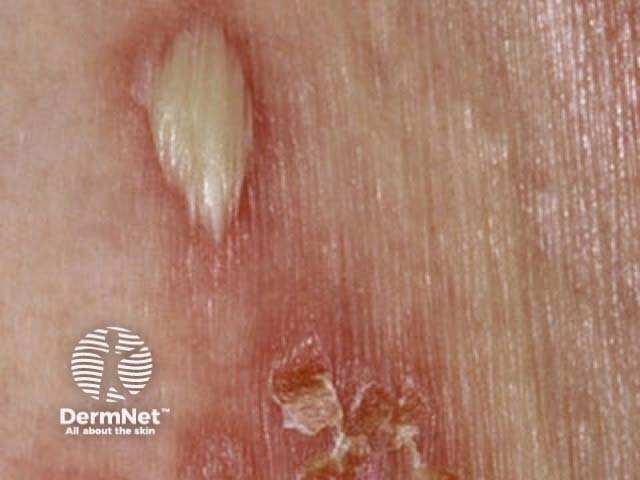
Subcorneal pustular dermatosis
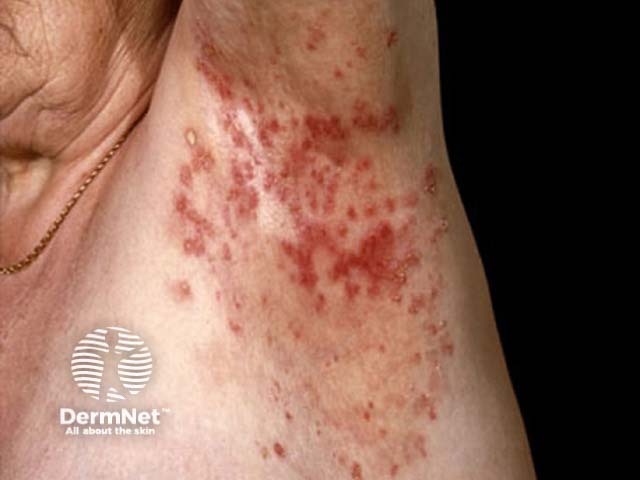
Subcorneal pustular dermatosis
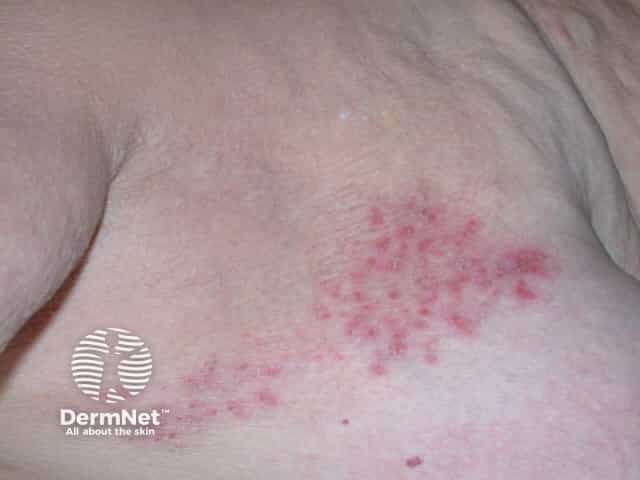
Subcorneal pustular dermatosis
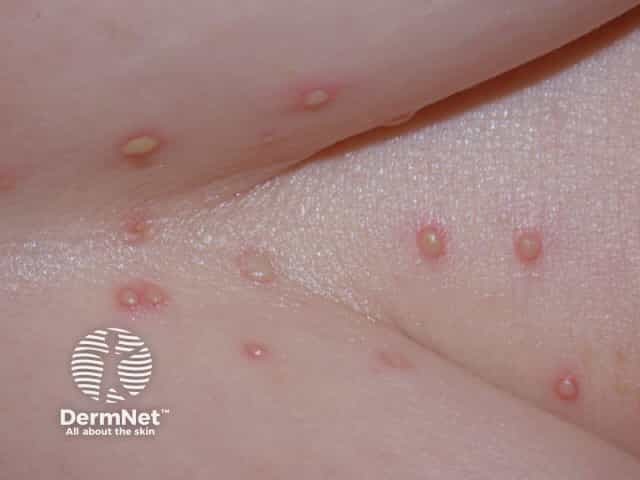
Subcorneal pustular dermatosis

Subcorneal pustular dermatosis
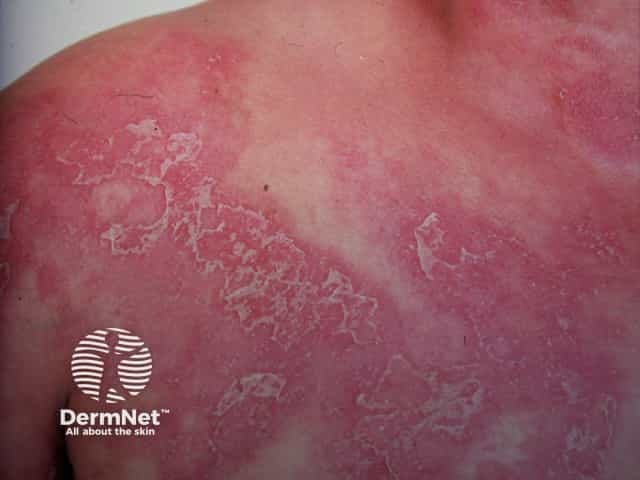
Subcorneal pustular dermatosis
What is the cause of subcorneal pustular dermatosis?
The cause of subcorneal pustular dermatosis is not known.
However, it is associated with some other conditions. The most frequent are:
- IgA monoclonal gammopathy (accumulation of abnormal proteins in the blood)
- Multiple myeloma
- Pyoderma gangrenosum.
Other less frequent associated conditions include rheumatoid arthritis, lupus erythematosus, hyperthyroidism and hypothyroidism, polycythemia rubra vera, and SAPHO syndrome (synovitis, acne, pustulosis, osteitis).
Subcorneal pustular dermatosis can be very difficult to distinguish from generalised pustular psoriasis and acute generalised exanthematous pustulosis. They appear to be closely related disorders.
Investigations
Often, a skin biopsy will be performed to confirm the diagnosis.
Blood tests are likely to include a general screen such as blood count, calcium levels and liver function tests, and protein electrophoresis to look for a gammopathy.
Treatment
Treatment is aimed at preventing complications. Dapsone is often successful, with the lesions resolving over a month. Ongoing maintenance with a lower dose is sometimes needed.
Other treatment options include:
- Acitretin
- Sulfapyridine or sulfamethoxypyridazine (not available in New Zealand)
- Phototherapy including UVB and PUVA
- Colchicine
- Ciclosporin or other immune suppressants such as mycophenolate mofetil
- Biological response mediators including infliximab and adalimumab
Miscellaneous other agents have been successfully used for individual patients. Systemic steroids are generally ineffective and may in fact precipitate a flare-up of subcorneal pustular dermatosis.
Patients need long term follow-up with periodic evaluation of serum protein electrophoresis and immunophoresis because paraproteinemia or myeloma may develop after several years.
References
- Medscape Reference: Subcorneal Pustular Dermatosis
On DermNet
Other websites
- Subcorneal pustular dermatosis — British Association of Dermatologists
